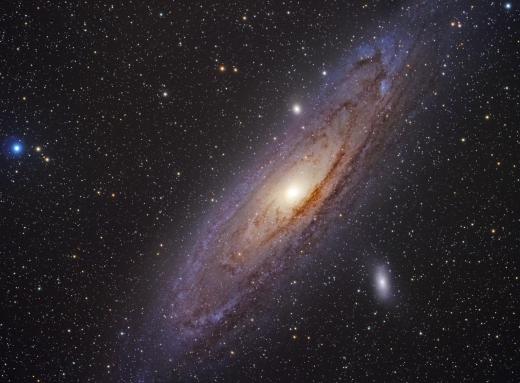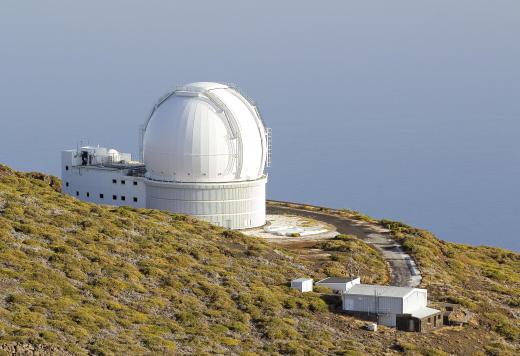Who is Edwin Hubble?
 Michael Anissimov
Michael Anissimov
Edwin Hubble (1889-1953) was a pioneering American astronomer responsible for several extremely important scientific advances in the early and mid 20th century. Hubble attended the University of Chicago and Oxford University, pursuing studies in math, astronomy, philosophy, and Spanish. By the time of his death in 1953, he was widely regarded as one of the greatest astronomers ever. The Hubble Space Telescope, the most productive space-based telescope in history, is named after him. Hubble’s Law, which declares that the further away a galaxy is, the greater a redshift it will have, is taught in astronomy classes worldwide.
Shortly after his earning of a Ph.D in 1917, Hubble went to work at the Mount Wilson Observatory near Pasadena, California, where he stayed the rest of his life. In 1919, right around the time of Hubble’s arrival, the 100-inch Hooker Telescope was completed, then the largest in the world. At the time, it was believed that the Milky Way Galaxy represented the entire universe, and faint objects such as the Andromeda Galaxy were just nebulae similar in size to our own solar system within the Galaxy.

Hubble’s great discovery, based on observations between 1922-1923 and announced 1 January 1925, was that these “nebulae” were in fact galaxies of their own, extremely distant from the Milky Way Galaxy. This was determined by locating variable stars within the nebulae and using them to calculate the distance. It turned out that the Andromeda Nebula was actually another galaxy located a couple million light years away. This had been suspected for several years, due in part to the observations of supernovae within Andromeda, all of which were characteristically fainter than previously observed supernovae in our own galaxy. The result of Hubble’s work was that the astronomy community – and humanity as a whole – realized that the universe was much bigger than previously believed.

Hubble’s second great “discovery” is not really his own, although he is often incorrectly credited for it. In 1929, along with Milton Humason, Hubble measured the distances and redshifts of 46 galaxies, establishing an empirical correlation between the distance of these objects and their redshifts. This was interpreted by cosmologists as meaning that the universe was expanding outwards in all directions, and that the redshift represented a Doppler effect whereby light from distant galaxies was stretched out as the intervening space expanded. The further apart the galaxies, the faster they diverged, and the redder the light was. This implied that at some point in the distant past, approximately 14 billion years ago, the universe started off as a point of extreme density and temperature. This became known as the Big Bang theory, and today is accepted by the vast majority of physicists. The Big Bang theory was first proposed by Alexander Friedmann in 1922, and Hubble’s observations in the late 1920s provided the first observational support for the theory.
Around the later part of his career, Hubble spent considerable time and effort in trying to get astronomy to be recognized as a category of physics rather than its own science. The main goal was to make astronomers eligible for the Nobel Prize in Physics. For a long time, this campaign was unsuccessful, but eventually the Nobel Prize Committee succumbed, and today a sufficiently important astronomical discovery is eligible for the Nobel Prize.
AS FEATURED ON:
AS FEATURED ON:












Discussion Comments
I love this website. It is very helpful especially when I'm doing homework. Thanks to whoever created this website.
Post your comments